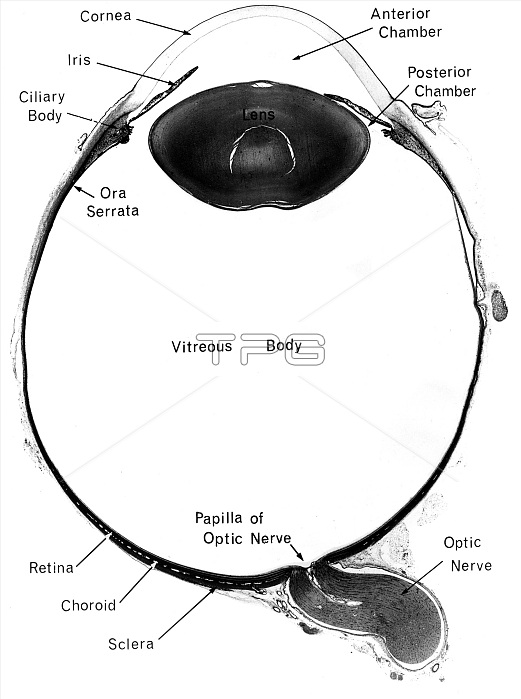
The human eye is an organ that reacts to light and has several purposes. As a sense organ, the mammalian eye allows vision. Rod and cone cells in the retina allow conscious light perception and vision including color differentiation and the perception of depth. The human eye can distinguish about 10 million colors. he eye is made up of three coats, enclosing three transparent structures. The outermost layer, known as the fibrous tunic, is composed of the cornea and sclera. The middle layer, known as the vascular tunic or uvea, consists of the choroid, ciliary body, and iris. The innermost is the retina, which gets its circulation from the vessels of the choroid as well as the retinal vessels, which can be seen in an ophthalmoscope. Within these coats are the aqueous humour, the vitreous body, and the flexible lens. The aqueous humour is a clear fluid that is contained in two areas: the anterior chamber between the cornea and the iris, and the posterior chamber between the iris and the lens. The lens is suspended to the ciliary body by the suspensory ligament (Zonule of Zinn), made up of fine transparent fibers. The vitreous body is a clear jelly that is much larger than the aqueous humour present behind the lens, and the rest is bordered by the sclera, zonule, and lens. They are connected via the pupil.
| px | px | dpi | = | cm | x | cm | = | MB |
Details
Creative#:
TOP22219429
Source:
達志影像
Authorization Type:
RM
Release Information:
須由TPG 完整授權
Model Release:
N/A
Property Release:
No
Right to Privacy:
No
Same folder images:

 Loading
Loading